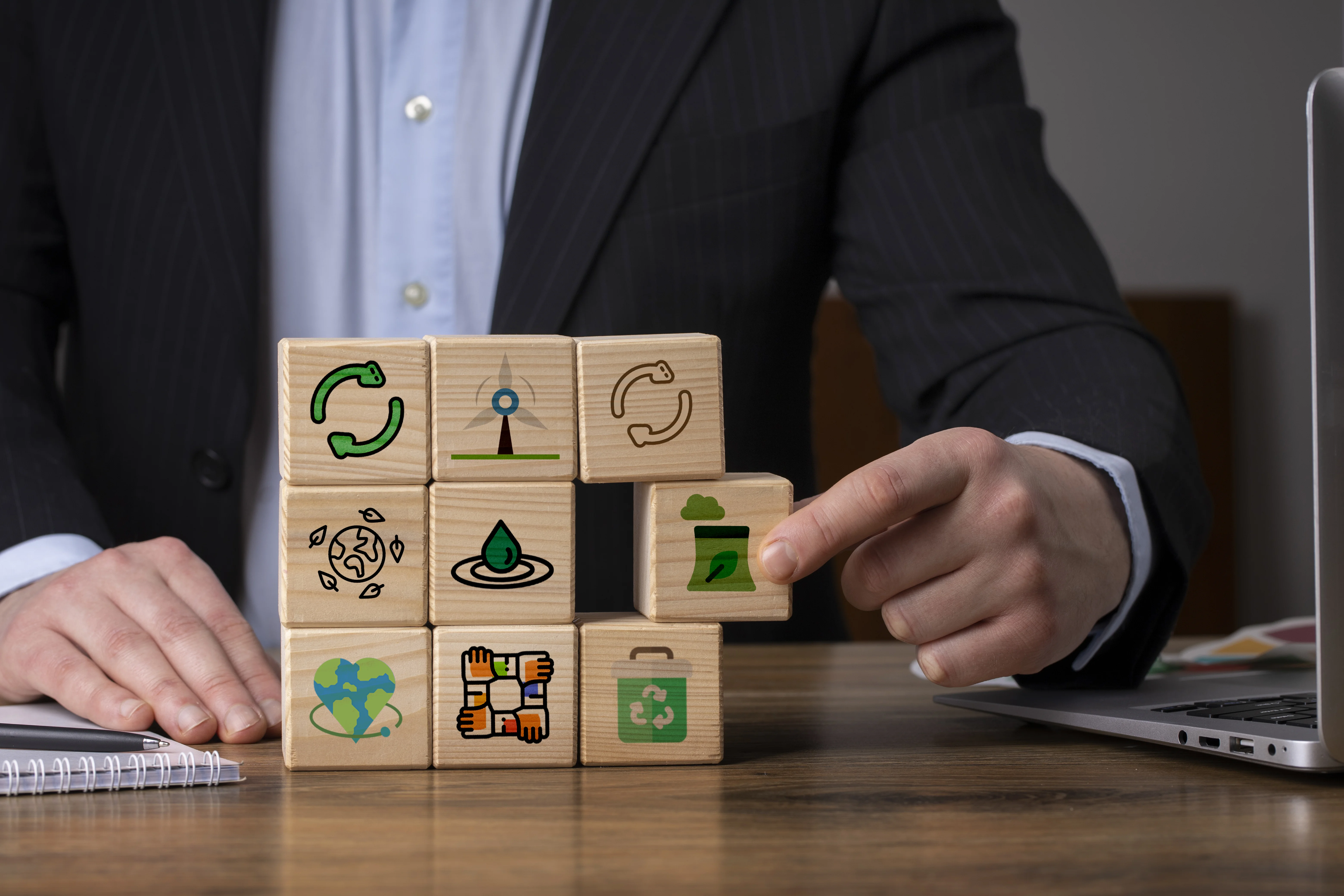Índice
The traditional linear economic model, characterized by a "take, make, dispose" approach, is increasingly unsustainable. Depleting natural resources, generating excessive waste and pollution, and contributing to climate change and biodiversity loss are some of its major drawbacks. To address these challenges, the concept of a circular economy has emerged. This economic model aims to keep products and materials in use for as long as possible, extracting the maximum value from them while minimizing waste. By understanding the circular economy principles, we can work towards a more sustainable future.

A circular economy is a model of material and energy flows that seeks to eliminate waste and pollution. Unlike the linear economy, where resources are extracted, used, and discarded, the circular economy focuses on closed loops. This means that products and materials are designed to be reused, repaired, refurbished, remanufactured, or recycled. The goal is to create a system where finite resources are used efficiently, and waste is minimized or eliminated altogether.
Transitioning to a circular economy offers numerous benefits for individuals, businesses, and the environment. Some of the key advantages include:
Resource Efficiency: By reducing the consumption of raw materials, the circular economy helps conserve natural resources and mitigate their depletion.
Waste Reduction: By designing products for durability, reusability, and recyclability, the amount of waste generated is significantly reduced.
Job Creation: The circular economy can create new jobs in areas such as repair, remanufacturing, and recycling.
Economic Growth: By stimulating innovation and creating new markets, the circular economy can contribute to economic growth.
Climate Change Mitigation: Reducing the consumption of raw materials and waste can help lower greenhouse gas emissions and combat climate change.
The Ellen MacArthur Foundation has outlined ten principles of the circular economy, which provide a framework for businesses and individuals to adopt circular practices. These principles cover various aspects of the circular economy, from design and production to consumption and end-of-life management.
Although variations exist, these are the circular economy's core principles:
Design for the future: Products should be designed with their entire life cycle in mind, considering reuse, repair, and recycling.
Keep products and materials in use: Extend the lifespan of products through repair, refurbishment, or remanufacturing.
Regenerate natural systems: Restore and enhance ecosystems while operating within their natural cycles.
Optimize resource yields: Maximize the use of renewable energy and materials.
Leverage renewable energy: Transition to a renewable energy system.
Eliminate toxic substances: Design out hazardous materials from products and processes.
Engage consumers: Empower consumers to make informed choices and participate in circular economy activities.
Optimize product life: Design products for durability, reparability, and recyclability.
Think systemically: Consider the entire value chain and its impact on the environment and society.
Build collaboration: Foster partnerships across industries, governments, and communities to drive circular economy initiatives.
The European Union has been a pioneer in promoting the circular economy. The EU's definition emphasizes the importance of reducing waste, reusing products, and recycling materials. It also highlights the role of digital technology in enabling the circular economy, such as through product passports and tracking systems. The EU's circular economy strategy aims to create a more resource-efficient and competitive Europe while improving the quality of life for its citizens.
Transitioning to a circular economy presents both challenges and opportunities. Some of the key challenges include the need for infrastructure development, changes in consumer behavior, and overcoming existing business models. However, there are also significant opportunities for innovation, job creation, and economic growth.
To successfully implement the circular economy principles, collaboration between governments, businesses, and consumers is essential. By working together, we can create a more sustainable future for generations to come.
The circular economy principles are being implemented by businesses and communities worldwide. Numerous case studies demonstrate the potential of this approach. For example, some companies are extending the life cycle of their products through repair and refurbishment services. Others are focusing on product design to facilitate disassembly and recycling. Additionally, closed-loop systems are being developed to recover valuable materials from waste. These examples showcase the practical application of the circular economy and inspire others to adopt similar strategies.
While the circular economy holds immense promise, it also presents challenges. Overcoming existing linear business models, building the necessary infrastructure, and fostering consumer awareness are essential steps. However, these challenges also represent significant opportunities for innovation and economic growth. By investing in research and development, supporting entrepreneurship, and creating supportive policy frameworks, governments, businesses, and individuals can work together to accelerate the transition to a circular economy.
Consumers play a vital role in driving the circular economy. By making conscious choices about the products they purchase, how they use them, and how they dispose of them, consumers can significantly impact the success of circular initiatives. For example, opting for products with longer lifespans, repairing items instead of replacing them, and recycling properly contribute to reducing waste and conserving natural resources. Additionally, supporting businesses that embrace circular economy principles can encourage further adoption of these practices.
Ultimately, the transition to a circular economy requires a collective effort. By understanding the circular economy principles and taking action, individuals, businesses, and governments can work together to build a more sustainable and resilient future.
The circular economy offers a promising path towards a more sustainable and resilient future. By adopting the principles of the circular economy, we can reduce our reliance on finite resources, minimize waste and pollution, and mitigate the impacts of climate change.
To accelerate the transition, it is essential to invest in research and development, support businesses in adopting circular practices, and educate consumers about the benefits of the circular economy. By making conscious choices and supporting circular initiatives, individuals can contribute to building a more sustainable world.
Ultimately, the success of the circular economy depends on a collective effort. By embracing the principles of circularity, we can create a future where resources are used efficiently, and waste is a thing of the past.

¡Muchas gracias!
Hemos recibido correctamente tus datos. En breve nos pondremos en contacto contigo.